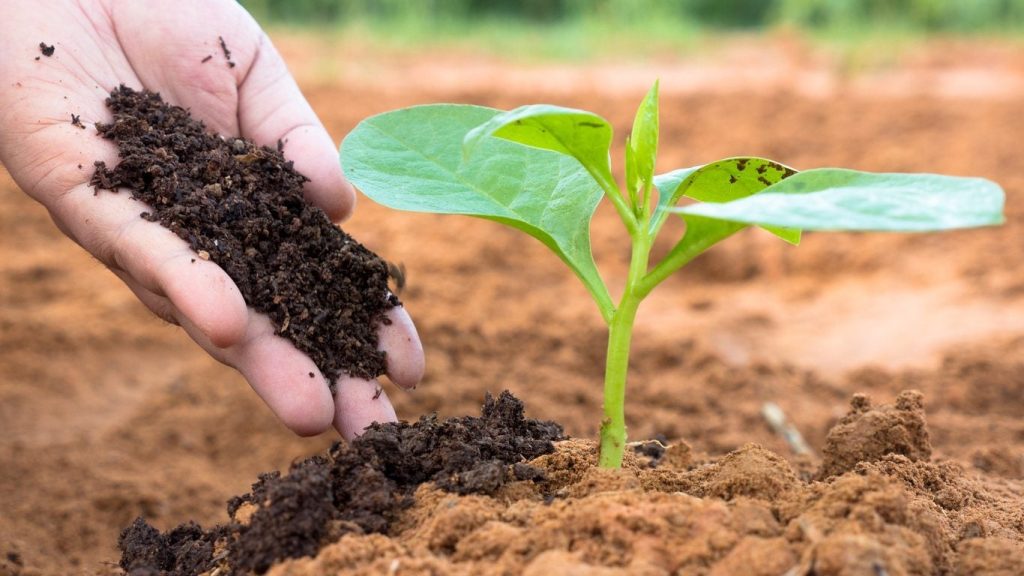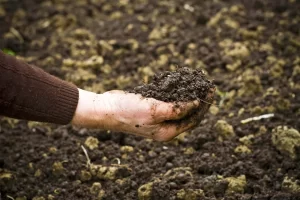What is humus?
Humus is an essential part of soil health and fertility. Arborists understand the intricate balance required to keep trees and plants healthy. Humus, formed from decomposed organic matter, is critical to maintaining this equilibrium because it improves soil structure, water retention, and nutrient availability. Those who wants to know what is humus, how it is formed, its benefits and other important points can take help from thos guide
What is humus?
Humus is the black, organic residue in the soil as plant and animal materials decompose. This decomposition process breaks down complex organic molecules into simpler components called humus. Humus is high in carbon and contains vital nutrients for plant growth. It is unlike simple organic matter, is persistent and resistant to further decomposition, making it a fertile reservoir over time.
Composition of humus
Humus is made up of several organic substances, including:

Humic acids are big molecules that help soil retain water and minerals.
Fulvic acids are smaller compounds that promote nutrient absorption in plants.
Humin is the most persistent component, contributing to the dark hue and long-term fertility of soil.
Benefits of Humus in Soil
The presence of humus in soil provides several benefits, critical to plant health and productivity.
Enhanced Soil Structure
Humus enhances soil structure by binding soil particles to form aggregates that increase porosity and aeration. This structure allows roots to penetrate more easily, improves water penetration, and lowers the risk of erosion.
Increased Water Retention
Humus-rich soils have a higher capacity to retain water. This is especially significant in areas prone to drought. Humus can hold up to 20 times its weight in water, ensuring a consistent moisture supply for plants and eliminating the need for regular irrigation.
Nutrient Supply and Retention
Humus is a natural storage for vital nutrients such as nitrogen, phosphate, and potassium. It slowly releases these nutrients, guaranteeing a continuous supply for plants. Additionally, humus enhances cation exchange capacity (CEC), allowing soils to retain and supply more nutrients effectively.
Humus improves soil pH and buffers against acidic or alkaline situations. This provides a more stable habitat for plant roots and helpful microbes, improving soil health.
The Formation of Humus
Humus is the outcome of a lengthy and complex process involving the degradation of organic substances. This process can be divided into various steps.
1. Littering
The first stage is the collection of organic detritus on the soil surface, which includes fallen leaves, dead plants, and animal bones. This organic litter offers the raw elements for humus production.
2. Fractionation
Soil fauna, such as earthworms, insects, and other organisms, break down bigger chunks of organic waste into smaller pieces. This fragmentation hastens the decomposition process by increasing the surface area available for microbial activity.
3. Decomposition
Bacteria and fungi help break down the fractured organic materials. These microbes convert complex organic compounds into simpler components, releasing nutrients.
4. humification
The final step is humification, in which simpler organic components undergo chemical modifications to form stable humus. During this stage, humic compounds such as humic acids, fulvic acids, and humin are produced, which contributes to the humus’ rich, dark hue.
Related Posts:
Increased Humus Content in Soil
Enhancing soil humus content is important for soil health and fertility. Here are some efficient ways to raise humus levels.
Adding Organic Matter
Add organic elements like compost, manure, and green cover crops to your soil. These components disintegrate over time, resulting in the production of humus. Regular addition of organic matter ensures a steady supply of raw materials for humus development.
Reduced tillage
Reduced tillage helps to preserve soil structure and protects organic materials from excessive decomposition. Reduced tillage practices allow organic matter to decay, which promotes humus buildup.
Mulching
Mulch on the soil surface helps to retain moisture, reduces erosion, and adds organic matter as it decomposes. Mulching not only conserves water but also provides a consistent supply of organic matter, which aids in humus formation.
Crop Rotation and Cover Cropping
Crop rotation and cover crops such as clover or legumes help to improve the soil with organic matter. These techniques contribute to a healthy, humus-rich soil environment by providing a steady supply of plant leftovers for decomposition.
Humus and soil microorganisms
The interaction between humus and soil microbes is symbiotic. Microorganisms degrade organic matter to produce humus, which offers a stable habitat and nutrition for these organisms. Beneficial microorganisms, such as mycorrhizal fungi, develop connections with plant roots to improve nutrient and water intake.
Role of Earthworms
Earthworms play an important part in humus production by breaking down organic matter and improving soil aeration. Their castings are high in nutrients and considerably improve soil fertility and structure.
Humus in Sustainable Agriculture
Humus levels must be kept high in sustainable agriculture to ensure long-term soil health and productivity. Organic farming, permaculture, and agroforestry all emphasize the need for humus-rich soils to build resilient ecosystems and avoid reliance on chemical fertilizers.
Organic farming
Organic farming relies on natural processes and organic inputs to keep the soil fertile. Organic farmers improve soil microbiome health using compost, green manures, and crop leftovers.
Permaculture
Permaculture ideas are centered on developing self-sustaining agricultural systems. Integrating varied plant species, mulching, and composting are all important activities for increasing humus and improving soil health over time.
Agroforestry
Agroforestry includes trees, shrubs, crops, and livestock. This approach improves biodiversity and soil structure, which helps to accumulate humus and ensures the farming system’s overall sustainability.
FAQS
What is the distinction between humus and compost?
Compost is decomposed organic waste that people actively handle, whereas humus is a stable, natural component of soil formed through protracted decomposition.
Can humus be put into the soil directly?
Humus is difficult to add directly. Instead, organic products such as compost, manure, and mulch will decay and help to build humus over time.
How can humus alter soil pH?
Humus helps to keep soil pH constant. It can neutralize acidic and alkaline soils, promoting plant development.
Is humus the same as topsoil?
No, humus is a part of topsoil. Topsoil is the soil’s uppermost layer, rich in organic matter, including humus, minerals, air, and water.
How can I improve the humus content of my garden?
Compost, mulch, and green manure can all help to increase humus. Reduce tillage and use crop rotation to preserve and increase humus levels.
Conclusion
Humus is a key component of healthy soil, giving several advantages that improve plant growth and soil quality. Understanding what is humus, its nature, development, and advantages of humus is critical for arborists, gardeners, and farmers who want to cultivate healthy and productive ecosystems.We may encourage sustainable land management and ensure our soils’ long-term vitality by employing humus-increasing meaures.





